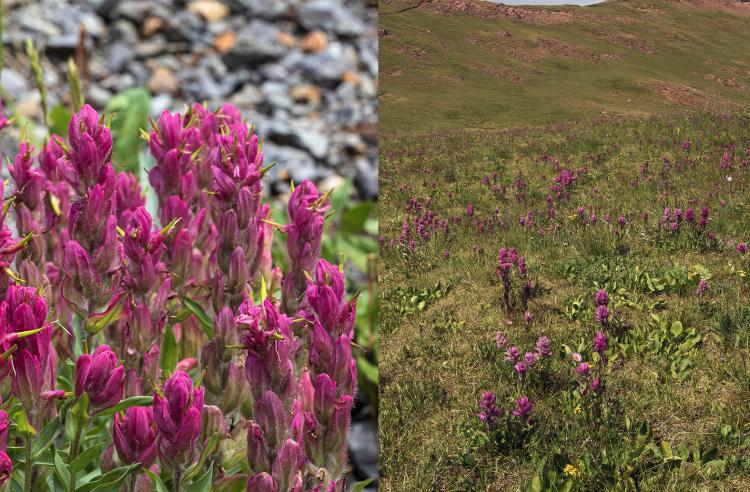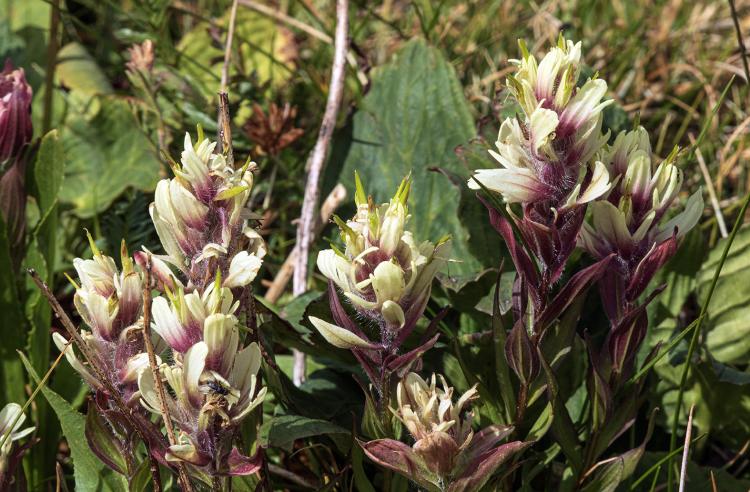Rosy paintbrush hybridizes, producing a range of bright colors
The stunning flower, seen in Colorado’s high country, might be a distinct species or not; regardless, this is science at work
I first saw rosy paintbrush, Castilleja rhexifolia, on a photography trip to Governor Basin, high above Ouray in the San Juan Mountains. It made a memorable first impression, for I had never seen that brilliant color that seems to glow with its own light.
My impression is shared by experts on wildflowers. In her book Wild about Wildflowers, Katherine Darrow wrote, “Rosy paintbrush may be the most spectacular floral display in the Rocky Mountains.” In his website "Southwest Colorado Wildflowers," Al Schneider wrote "Castilleja rhexifolia bract colors are most often hot rose-pink, but they range from subtle magentas to flaming rose to hot iridescent pink. For pure outright amazing color, this paintbrush is hard to surpass."
While rosy paintbrush has much to show, several interesting biological facets are not apparent to the casual observer. The dazzling colors are not presented by petals, but by bracts and sepals, tissues that envelope the flower when it is a bud.

Rosy paintbrush displays colors from bracts and sepals, not petals. Photo by Jeff Mitton.
The petals are fused into tube that can only be seen by looking straight down into the blossom. Its stigma (receives the pollen) protrudes from the tube of mature flowers.
Paintbrushes are hemiparasitic, meaning that they can grow isolated from other plants, but when their roots encounter the roots of another species, they form haustorial connections through which they siphon off water, nutrients and chemical defenses. In some places, rosy paintbrushes are all the same color, but in others they exhibit a surprising range of colors produced by hybridization with other paintbrush species.
Hybridization between paintbrush species is not rare. In western Colorado, rose paintbrushes hybridize with scarlet paintbrushes, C. miniata, and sulphur paintbrushes, C. sulphurea. Scarlet paintbrushes are vermillion or bright red and sulphur paintbrushes are whitish, pale green and pale yellow. Where these three species are hybridizing, they produce offspring with intense shades of pink, red, orange and magenta flowers.
Erika Hersch-Green conducted research on hybridization between rosy, scarlet and sulphur paintbrushes, and she also presented data on ploidy in these three species. Ploidy varies both among species and within paintbrush species, so that individual plants can be diploid (two copies of each chromosome), tetraploid (4), hexaploid (6), octaploid (8) or decaploid (10).
Her field sites were near Gothic, Colorado, and she was able to demonstrate that rose paintbrush were tetraploid, scarlet paintbrushes were octoploid, and sulphur paintbrushes were diploid. In many plant groups differences in ploidy prevents hybridization, but not in paintbrushes.
When I was photographing wildflowers in Governor Basin, I noticed some plants with multicolored bracts, a color and pattern I had not seen before. While reading for this column, I learned that the plants with multicolored bracts were proposed by some biologists to be hybrids between rose paintbrush and perhaps sulphur paintbrush.
Al Schneider, in his "Southwest Colorado Wildflowers" site, disagrees with the hybrid hypothesis and presents observations more consistent with the hypothesis that the multicolored bract form is an undescribed species. He proposed the name Castilleja versicolor and added sp. nov. to indicate that it is a new name.
From my observations in the field, quite unaware that this controversy existed, I went away with the opinion that I had stumbled upon a paintbrush species new to me and perhaps restricted to high elevations. What I saw did not suggest to me that they were hybrids.
Controversies about demarcation of species or presence of hybridization do not indicate anything wrong, nasty or embarrassing among biologists. Controversies are necessary flurries of progress in a field of science, and, quite frankly, they are entertaining and exciting.

This paintbrush might be a hybrid and it might be an undescribed species. Photo by Jeff Mitton.
Already, some genetic work has examined the genetics of the hybridizing species and the putative hybrid. Data collected so far suggest that the multicolored bract form is a distinct species, not a hybrid. But more data are needed, and I suspect this intriguing puzzle will be solved soon.
A person walking through a high-elevation meadow might notice rosy paintbrush and pause to admire its incredible color. But if a person is motivated to read about that species, rosy paintbrush becomes even more interesting.
It is a hemiparasite with an unusual flower form, and it hybridizes with species with different numbers of chromosomes and genome sizes. Its hybridization creates a palette of bright colors and may hide an undescribed species.

